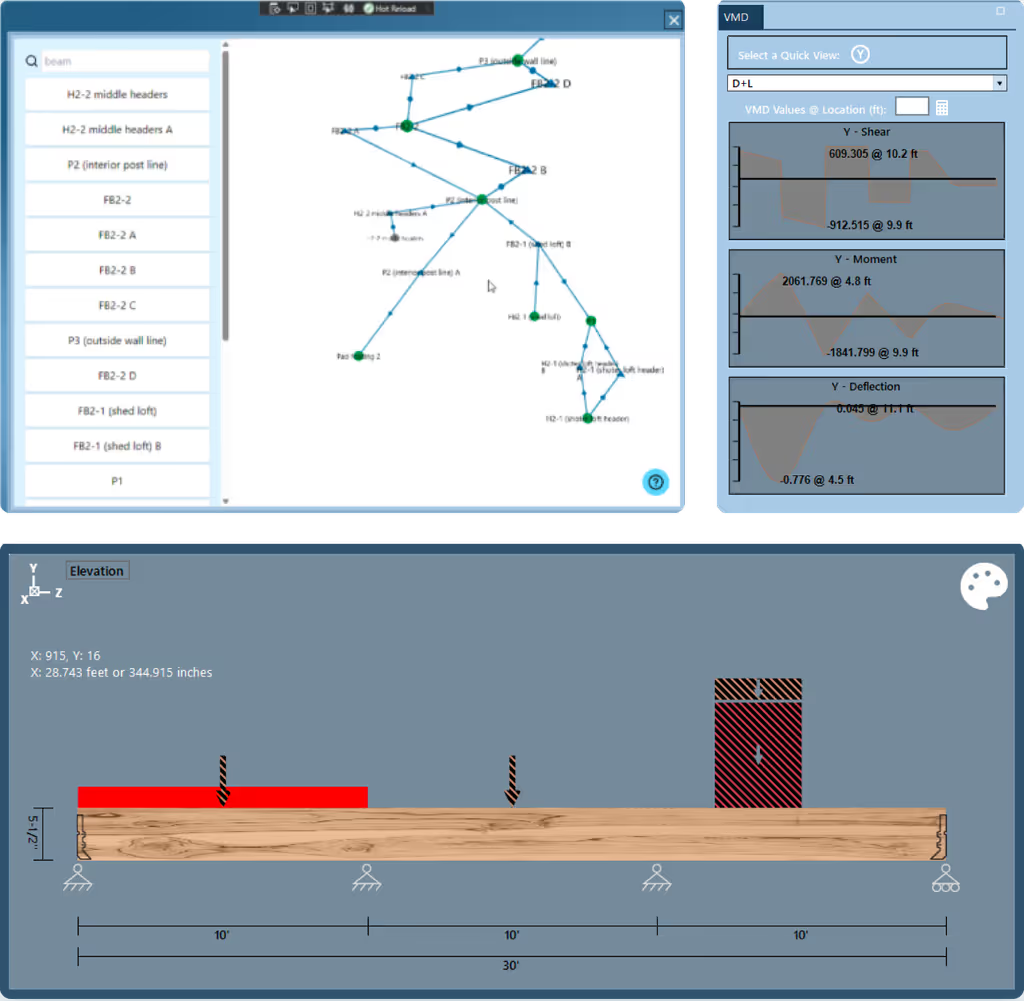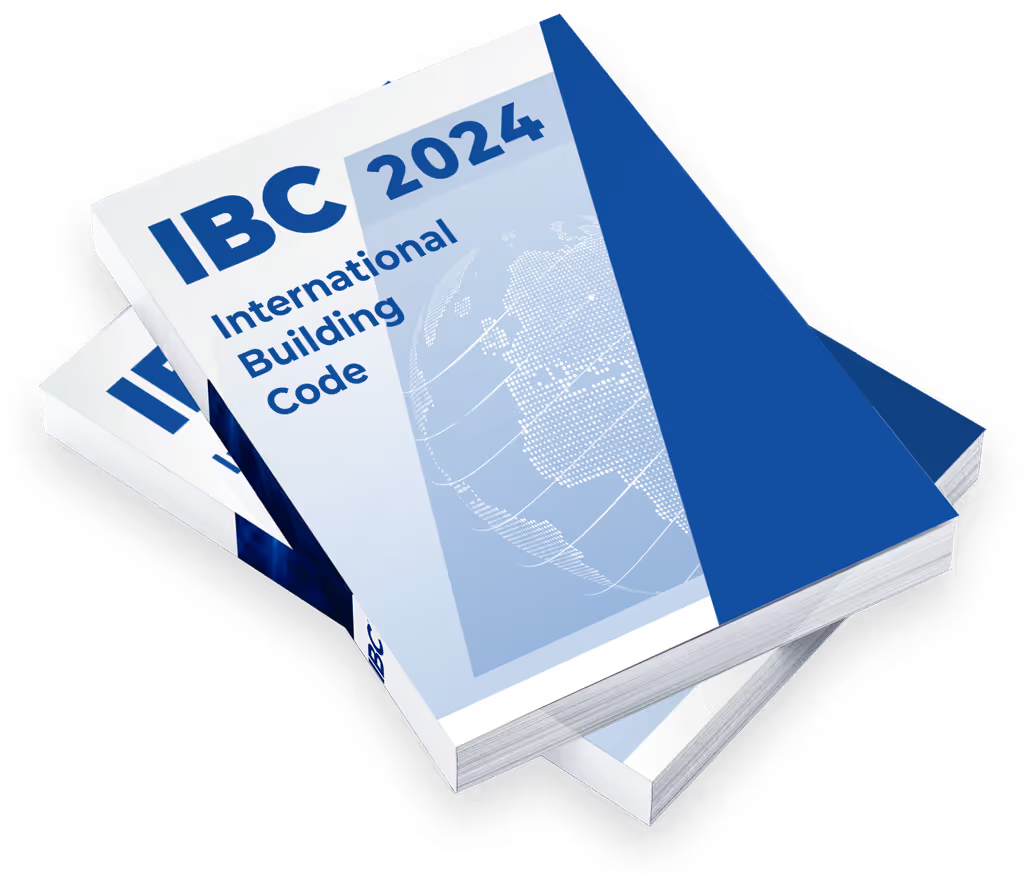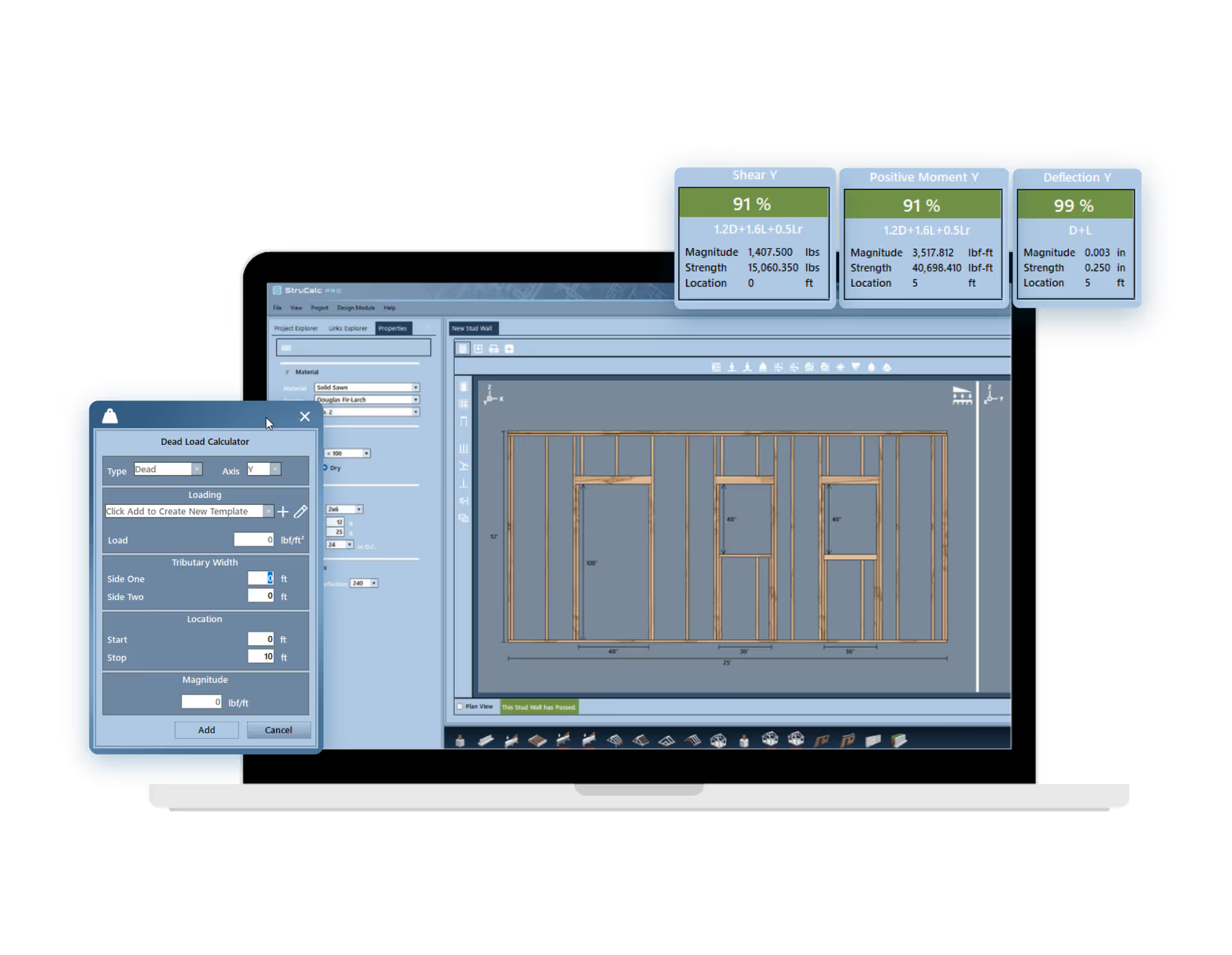Retaining Wall Calculator Software
Retaining walls are critical structural components used to stabilize soil and manage elevation changes in residential, commercial, and industrial construction projects. Designing them correctly requires advanced calculations that account for lateral earth pressures, overturning, sliding, and bearing capacity. With an intuitive interface, automatic load analysis, and comprehensive material options, StruCalc supports the design process and produces permit-ready calculation reports.

Applications
StruCalc’s retaining wall calculator supports the most common retaining wall types used for residential and commercial applications.

Gravity Retaining Walls
Gravity retaining walls rely on their own weight and mass to resist soil pressure and are typically constructed from concrete, stone, or masonry.

Cantilever Retaining Walls
Cantilever retaining walls use a structural stem and base slab to leverage mass and resist lateral pressure.
Advanced Calculations & Reliable Insights
Analysis Capabilities
Multi-Span Beams
Cantilever Beams
Triaxial Loading
Dynamic Load Linking
English & Metric Units
Auto Sizing
ASD & LRFD

Checks & Outputs
Normal Stress
Shear Stress
Moment of Inertia
Buckling
Moment Capacity
Deflection
Reactions

Start saving time and stay focused on what matters.
Get your free 30 day trial today.
Retaining Wall Calculator FAQs
What Types of Retaining Walls Can StruCalc Analyze?
StruCalc’s retaining wall calculation program supports the most common retaining wall types used in structural and geotechnical engineering:
- Gravity Retaining Walls – Rely on their own weight and mass to resist soil pressure. Typically constructed from concrete, stone, or masonry.
- Cantilever Retaining Walls – Use a structural stem and base slab to leverage mass and resist lateral pressure. Requires reinforcement for stability.
Each wall type includes customizable geometry, backfill angles, surcharge loads, and material properties to suit real-world design conditions.
What Loads and Factors Must Be Considered in Retaining Wall Calculations?
Proper retaining wall analysis involves the evaluation of multiple forces and safety factors. The StruCalc retaining wall calculator accounts for:
- Lateral Earth Pressure – Calculated using Rankine or Coulomb theories, based on soil type, wall height, and backfill slope.
- Surcharge Loads – Additional loads from adjacent structures, vehicles, or slope stabilization.
- Sliding Resistance – Ensures the base does not shift horizontally under lateral pressure.
- Overturning Stability – Calculates resisting and overturning moments to prevent wall rotation.
- Bearing Capacity – Verifies that soil pressure beneath the footing is within safe limits.
StruCalc automatically checks these parameters against recommended safety factors per industry standards.
What Materials Are Supported in StruCalc’s Retaining Wall Software?
StruCalc supports a range of structural materials, allowing engineers to perform calculations that support a variety of project requirements:
- Concrete Retaining Walls – Reinforced or mass concrete walls evaluated per ACI codes.
- Masonry Retaining Walls – CMU (concrete masonry units) and stone walls with reinforcement verification.
- Reinforced Soil Backfill – Includes options for geogrid or mechanically stabilized earth (MSE) components.
Material inputs include unit weight, friction angle, cohesion, and allowable bearing capacity.
How Does StruCalc Handle Complex Retaining Wall Calculations?
Manual analysis of retaining walls is often complex and time-consuming due to nonlinear geometry and variable soil conditions. Common challenges include:
- Non-Level Backfill and Sloped Surfaces – Alter lateral pressure distribution.
- Irregular Loading Conditions – Surcharges, hydrostatic pressure, or seismic loads.
- Base Shear and Moment Distribution – Requires integration of soil pressure over the wall height.
- Reinforcement Detailing – Proper placement and sizing of rebar to meet ACI and IBC standards.
StruCalc’s retaining wall calculator simplifies these tasks by automating pressure calculations, load combinations, and reinforcement checks. This eliminates the need for spreadsheets and reduces risk of error in iterative calculation steps.
What Codes and Standards Does StruCalc Support for Retaining Walls?
Producing code-compliant retaining wall calculations requires adherence to national and international standards. StruCalc supports:
- IBC (International Building Code) – Governs structural safety, including overturning, sliding, and bearing checks.
- ACI 318 – Covers analysis of concrete walls, including reinforcement and crack control.
- ASCE 7 – Provides guidance for lateral earth pressure, seismic loading, and surcharge application.
- TMS 402/602 – For masonry wall analysis and reinforcement considerations.
StruCalc applies these standards automatically and generates structured reports that satisfy permitting and inspection requirements.
Why Use a Retaining Wall Calculation Program Instead of Spreadsheets?
While spreadsheets can handle basic static calculations, they fall short for complex retaining wall problems that involve multiple load cases and iterations. StruCalc offers advantages such as:
- Built-In Earth Pressure Theories – Rankine, Coulomb, and seismic parameters.
- Safety Factor Checks – Sliding, overturning, and bearing automatically evaluated.
- Reinforcement Verification Tools – Automated checks for rebar strength and serviceability.
- Permit-Ready Reports – Exportable and code-referenced documentation for plan review.
Efficiency and Accuracy – Less time spent on manual calculations, more time for optimization and refinement.
Structural Design Calculations Made Simple
Increase Your Productivity
Let StruCalc save you time on structural calculations and help you do more of what you do best.
Maximize Accuracy & Compliance
StruCalc delivers accurate calculations according to industry best practices that meet IBC and NDS code.
Streamline Permit Approval
Designed according to industry best practices, our detailed reports are purposefully structured to accelerate permit approvals.
Features that Our Customers Love
Linked Load Paths
Get dynamically updated results with linked load paths.
Comprehensive Material Database
From wood and laminates to concrete and steel, we’ve got you covered!
Relevant Codes & Standards
Compliant with the IBC and NDS, StruCalc keeps you up to date with latest code.
Automated Member Sizing
Simply input your loads and let StruCalc determine the most efficient size of your beam, footing, and more!
Quick Calcs
Use our pre-configured calculators to get quick calcs for hundreds of common applications
Design View
Streamlines the addition of loads through an intuitive data input screen, allowing for easy editing.
Powerful Solutions For Every Project
ENSURE YOUR ENGINEERING CALCULATIONS ARE FUTURE-PROOF
StruCalc Supports the 2024 IBC
StruCalc Plus and Pro have been updated to support the 2024 International Building Code standard to ensure that you stay up to code now and in the future.


Saving you time with
Quick Calculations & Permit Ready Reports
With a library of built-in use cases and a robust report generation engine, StruCalc gets you the answers you need quickly and gives permit reviewers the detail they’re looking for.
Powerful tools for complex analysis
Dynamically Track Linked Load Paths
When loads are changed, calculations are automatically updated, saving you time and accurately identifying issues. Let StruCalc do the heavy lifting for you!

Now Offering PDH Courses
Join our community to get great deals on quality PDH courses or get our StruCalc Pro with PDH annual subscription to get 15 PDH hours included with StruCalc Pro.

Why Choose StruCalc?
Fast, Intuitive User Interface
Our straight-forward UI is designed for efficiency, making complex structural calculations easy to navigate with minimal learning curve—so you can focus on design, not deciphering software.
Personalized Onboarding & One-On-One Support
When you need help getting started or expert advice on a complex application, our veteran team of support engineers are just a click or call away.
Extensive Application & Material Database
With hundreds of real-world use cases and a library of common construction materials, StruCalc provides everything you need in one powerful platform.
Building Materials Supported

Wood

Steel

LVL & Glulam

Masonry

Concrete
Pricing & feature comparison:
| Top-tier differences: |
StruCalc Pro: $89.97/mo |
ClearCalcs Pro: $119/mo |
ENERCALC: $199/mo |
|---|---|---|---|
| Personalized Onboarding | |||
| 1:1 Engineering Support | |||
| 2024 IBC | |||
| User Themes | |||
| Concrete Beams | |||
| Masonry Beams | |||
| Wood Shearwalls | |||
| 2024 NDS | |||
| 2021 IBC | |||
| 2018 IBC | |||
| 2018 NDS | |||
| Imperial Units | |||
| Concrete Columns | |||
| Metric Units | |||
| Steel | |||
| Solid Sawn | |||
| I-Joists | |||
| Glulams | |||
| Structural Composite | |||
| 24+ Load Combinations | |||
| LRFD | |||
| ASD | |||
| Beam & Joist Spans | |||
| Live & Dead Loads | |||
| Isolated Footings | |||
| Continuous Footings | |||
| Collar Ties | |||
| Embedded Posts | |||
| Hip & Valley Beams | |||
| Flitch Beam | |||
| Stud Walls | |||
| Wind, Snow, & Seismic Loads | |||
| Advanced Footing Loads | |||
| Out of Plane Loading | |||
| Multi-span Columns | |||
| Bearing Walls | |||
| Retaining Walls | |||
| Linked Load Tracking | |||
| Beam Analysis | |||
| Wall Analysis | |||
| Masonry Columns | |||
| Concrete Walls | |||
| Masonry Walls | |||
| Wood Hangers | |||
| Curved Glulams |
Packed with Features
Best pricing in the industry
No one else offers as many features as StruCalc. Get more for your money and join thousands of architects and engineers that have chosen StruCalc as their partner for structural calculation software.
The Importance of Accurate Calculations
Precise retaining wall calculations are necessary to evaluate stability against sliding, overturning, and bearing failure. Factors such as soil type, surcharge loading, wall geometry, and backfill conditions must be properly analyzed to avoid underdesign or overdesign. StruCalc helps engineers meet industry standards by providing detailed, code-compliant calculations that support confident decision-making and efficient design workflows.
StruCalc’s retaining wall analysis software provides powerful tools for structural engineers to perform gravity, and cantilever calculations. With an intuitive interface, automatic load analysis, and comprehensive material options, StruCalc supports the design process and produces permit-ready reports. This article explores the essential elements of retaining wall calculations, key technical considerations, and how StruCalc’s retaining wall calculation program enhances engineering precision and productivity.
Get Started with StruCalc’s Retaining Wall Calculator
StruCalc’s retaining wall calculator is a powerful tool for structural engineers working with gravity, and cantilever walls. With built-in compliance to IBC, ACI, ASCE, and TMS standards, automated safety checks, and easy-to-navigate interfaces, it simplifies the complexity of structural calculations that support retaining wall design. Whether you’re working on residential landscaping or commercial site development, StruCalc’s retaining wall calculation program enhances engineering precision and productivity.
Visit StruCalc.com to explore how our retaining wall analysis software can support your next project.







